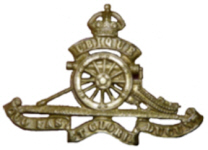



No.1735753, Gunner, George David POOLEY
Aged 26

|
George Pooley was born on 16th May 1915. His mother was Anna POOLEY, and his sister lived at Holywell Road (perhaps meant to be Holywell Row), Bury St.Edmunds according to
his Japanese PoW card. He was a motor engineer by trade. There is insufficient detail from the inscription on the memorial to identify him further.
Even his unit appears incomprehensible as he is a "gunner" in the RAF. It does seem he is the soldier detailed above.
Royal Artillery records have him born and resident in Bury St Edmunds. In the 1939 register he was a motor mechanic, single, living at Pine Bungalow, Holywell Row with his father George [10-1-1876] widower, retired woodseller; brothers Archie [14-2-1905] forestry worker and John [18-1-1909] woodseller; sister Betsy [10-3-1911]. There are no closed records. Parents and brothers not identified in the 1911 census and birth registrations also not found. There was a possibility that his father used the surname BRINKLEY but using this was also unsuccessful |

|
He attested for the Royal Artillery in 1940. Captured on 20th March 1942, he died at Hakodate Camp from Acute Colitis which seems to have been contracted initially in the Netherlands East Indies.
95 Battery,48th Lt A-A Regiment, Royal Artillery arrived at Batavia on board the Empress of Australia on 4th February 1942. 48 LAA Regiment RA, on arrival in Batavia, sent 95 Battery to Oosthaven in Sumatra en route for the airfield around Palembang (P1 and P2) to reinforce the air defence already there. When they arrived in Palembang they found that the evacuation was beginning and they had time only to turn round, retire to Oosthaven and return to Java. 95 Battery, on its return, was deployed around Andir airfield near Bandoeng (now Bandung). When the Dutch surrendered Java it was useless for the British to continue and on 9th March 1942 they surrendered to the Japanese. In fact the Far East Prisoners of War database shows his capture as 20th March 1942. As well as sending many men to work on the infamous Burma Railway, regular drafts of "slave labour" were sent to mainland Japan. Originally in the Yokohama Mausoleum his urn was moved to Yokohama War Cemetery in 1946. photo: Commonwealth War Graves Commission click here to go to the Commonwealth War Graves Commission website for full cemetery/memorial details |